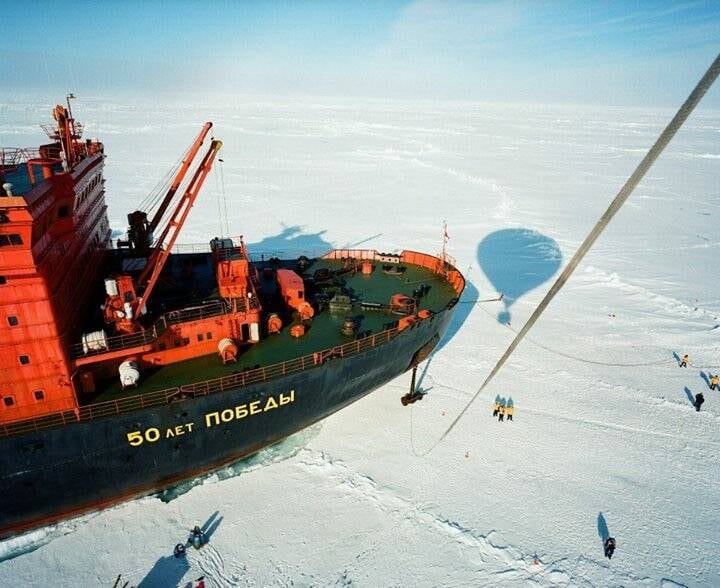“Uncharted Shifts: The Surprising Truth Behind Earth’s Magnetic North Pole Movement and Its Hidden Implications”
Have you ever tried using a compass only to find it pointing you the wrong way? Well, buckle up, because Earth’s magnetic north pole is pulling a fast one on us by shifting dramatically—and scientists are scratching their heads in disbelief. Recent measurements reveal that this elusive point has been making a beeline toward Siberia, leaving traditional navigation methods teetering on a tightrope. In fact, researchers are so baffled by this unprecedented movement that they’re calling it “something we have never observed before.” As we dive into the mysteries of our planet’s magnetic antics, we’ll explore the implications of this startling behavior and what it might mean for those of us reliant on GPS and other puzzling navigation technologies. Ready to navigate through this magnetic maze? Let’s go! LEARN MORE
Recent measurements of the shift in Earth’s magnetic north pole show that it’s moving toward Russia in an unprecedented way that scientists are calling “something that we have never observed before.”

NOAA NCEIThe movement of Earth’s magnetic north pole now shows a shift away from Canada and toward Siberia.
Earth’s magnetic north pole has been shifting gradually for centuries due to the movement of molten metals in the planet’s outer core. In the 1990s, magnetic north began to experience an unprecedented acceleration away from Canada and toward Siberia.
However, new measurements have shown that this movement of the magnetic north pole has now slowed in surprising ways. Scientists are uncertain about the cause of the recent deceleration and meanwhile worry about the impacts it may have on GPS navigation systems used by everything from planes to smartphones.
What Is Earth’s Magnetic North Pole And Why Does It Move?

BGS/UKRI/Wessel, P./W. H. F. SmithA map showing magnetic declination, or the angle between true north and magnetic north.
Earth’s north pole comes in two forms: true north and magnetic north.
True north refers to the geographic north pole, the fixed point where Earth’s rotational axis meets its surface. It is aligned with lines of longitude, which converge at this point. In contrast, magnetic north is the shifting location where Earth’s magnetic field lines point vertically downward, a result of the planet’s molten outer core generating a magnetic field.
As the molten metals in the core churn, Earth’s magnetic field shifts as part of a process called geodynamo. In addition to protecting the planet from harmful solar radiation and solar winds, Earth’s magnetic field and magnetic north in particular have played an integral role in navigation.
For centuries, compasses — devices containing magnetized needles that align with the magnetic north pole — have guided sailors, soldiers, and explorers across the globe. However, it wasn’t until 1831 that explorer James Clark Ross identified the precise location of Earth’s magnetic north pole, sparking ongoing efforts by researchers to track its movement.

BGS/UKRI/Wessel, P./W. H. F. SmithMap showing magnetic north pole moving between 1600 and 2025.
Today, the magnetic north pole plays a crucial role in numerous navigational systems that remain essential worldwide. It is so integral that the scientific community releases a new edition of the World Magnetic Model (WMM) every five years to keep navigation systems around the world updated as it shifts.
“It has typically moved about 10 km (6.2 miles) per year or less over the last 400 years,” Dr. William Brown, a geophysicist and geomagnetism researcher for the British Geological Survey, told CNN.
However, for the past 30 years, the magnetic north pole has been shifting rapidly north. In 1990, it increased the pace of its shift from 9.3 miles per year to 34.2 miles per year, which was unprecedented.
And just as quickly as it accelerated, it has now suddenly slowed down.
The Magnetic North Pole Is Moving In Ways That Are Leaving Scientists Baffled

ESA/geoGraphicsAnimation showing the magnetic north pole shifting from 1840 to 2019.
Last December, scientists from the British Geological Survey and the U.S. National Oceanic and Atmospheric Administration released the newest edition of the WMM. In it, researchers detailed how Earth’s magnetic north pole is shifting even more toward Siberia, but also revealed that this movement is slowing down.
“The current behavior of magnetic north is something that we have never observed before,” Brown announced in a statement from the British Geological Survey.
Scientists remain uncertain about why magnetic north pole’s movement accelerated before abruptly slowing down. One theory suggests that Siberia’s magnetic field is overpowering Canada’s, which may explain the rapid shift — but it does not fully account for the recent slowdown.
Even worse, predicting the movement of magnetic north has become more of a complicated task.
“It could change (its) rate, or even speed up again,” Brown told CNN. “We will continue to monitor the field and assess the performance of the WMM, but we do not anticipate needing to release a new model before the planned update in 2030.”



















